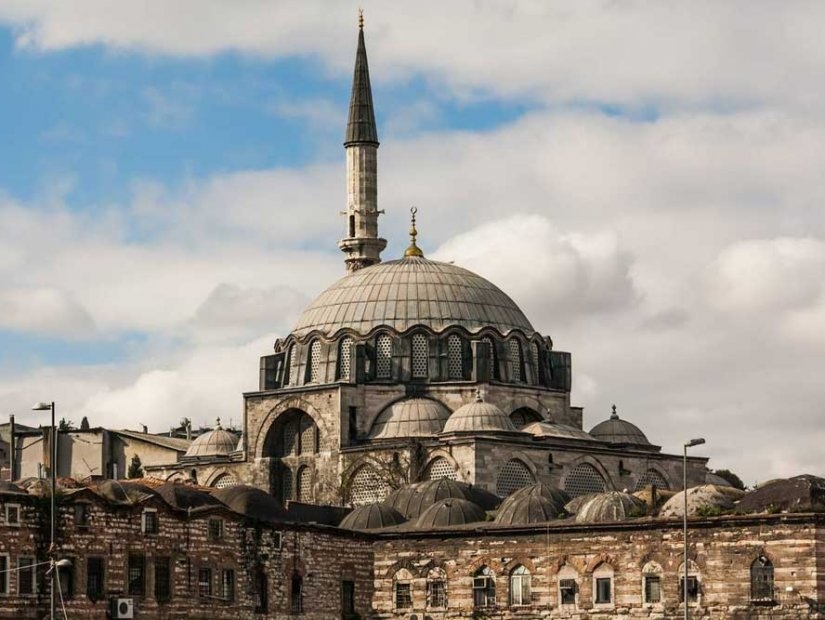Blog
Rustem Pasha Mosque
Rustem Pasha Mosque
Rustem Pasha Mosque
Rustem Pasha Mosque, named after Rüstem Pasha, who served as grand vizier for fifteen years during the reign of Suleiman the Magnificent, was built by Mimar Sinan in 1563. The mosque is in Eminönü, Tahtakale, in Hasırcılar Bazaar. It is one of the most important buildings that make up the silhouette of Istanbul. It was built on a high platform in a dominant position over the coastal silhouette. The mosque is located in one of the busiest places in the city since the Roman period.
The mosque was damaged in the fire of 1666 and the earthquake of 1776. Rüstem Pasha Mosque is known for its tile coverings, which attract attention with their extraordinary beauty in the history of Ottoman architecture. The richest tile collection in the country is on the walls of this mosque.
4 semi-domes support the great dome of the mosque. The arches of the great dome, which has 24 windows on its skirt, rest on 4 massive free-standing pillars with 8 corners. Its mimbar and mihrab are marble. The last congregation place has 6 columns and 5 domes. Its single balcony minaret was built in place of the destroyed original.
At that time, this region was active as a commercial area. Shops and warehouses were built in the lower part since the mosque is located in the pit. The portico courtyard of the mosque is reached by stairs from both sides. The mosque’s outer eaves, minaret, exterior courtyard, and ground walls were repaired in the 1960s.
This building consists of a warehouse, a shop, a fountain, and two inns. It is very famous for its tile decorations. The interior of the mosque is furnished with the most beautiful Iznik tiles of the period. Its plain appearance caused criticism. Thereupon, Mimar Sinan decorated the mosque’s interior with Iznik tiles, creating a mosque that is simple from the outside but magnificent from the inside. The interior of the mosque is decorated with mostly blue Iznik tiles. Everywhere up to the dome is covered with tiles. Especially tulip-patterned tiles exhibit the best examples of Ottoman tile art.


